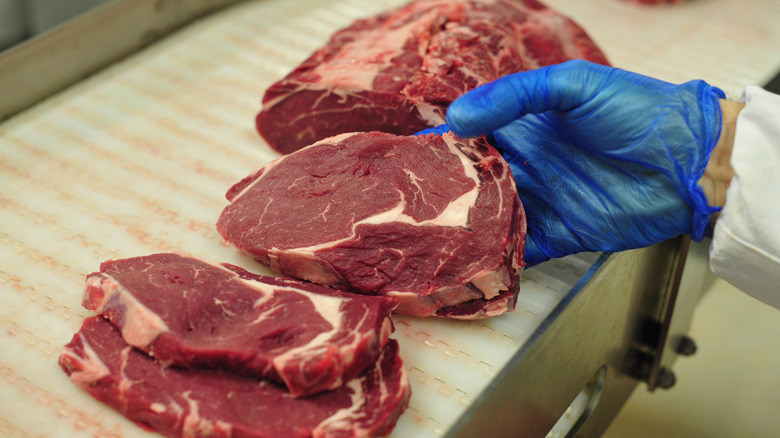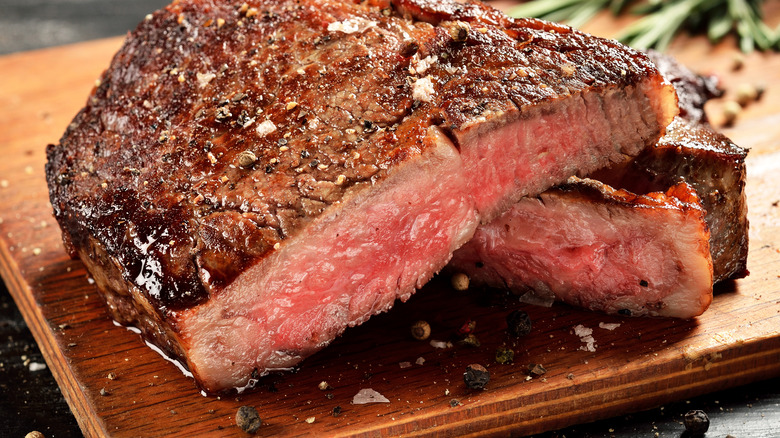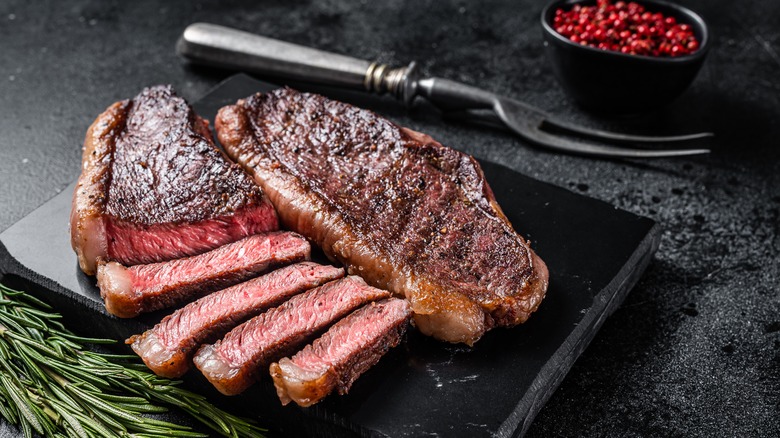What You Should Consider Before Buying Select Grade Beef
When you're walking through the meat aisle of your local grocery store, you've probably noticed some interesting labels on the packaged steaks. One brand of beef is grass-fed, organic, and has a "prime" rating, while the slice of rib-eye beside it claims to have a "beef grading" of "Choice." But just what do these beef grades mean?
According to Texas A&M University, meat grading began in 1916 under the United States Department of Agriculture as part of a plan to "develop a uniform class and grade nomenclature for marketing reporting," or in layman's terms, a standard, universal code for the quality of beef. It was only in 1927 that the official system was fully introduced, notes the University of Nevada, although the grading system has undergone many changes and revisions (per the United States Department of Agriculture).
Today, the eight "grades" of beef are Prime, Choice, Select, Standard, Commercial, Utility, Cutter, and Canner (per Beef Magazine). Prime is incredibly high-quality in taste and texture and is usually sold in high-end restaurants or fancy hotels, while Cutter and Canner meats are often used in foods such as canned soups.
But what is "select" grade beef, and is it worth the money?
Select-cuts of beef aren't as marbled as higher-grade beef
When you're looking for a steak to grill, you want something with a bit of fat to it. You don't want too much fat, or you'll find yourself with a rubbery, greasy steak. But you don't want to skimp on the fat, either — as the old saying goes, "fat is flavor." If you're looking for a lot of marbling or a distribution of fat deposits through your meat, you may want to read up on that "select-grade" steak you're going to buy.
According to the USDA, select-grade steak is described as "uniform in quality and normally leaner than the higher grades." Unlike Prime and Choice steaks, select-grade steaks are "lean cuts" and may be less flavorful than higher-quality steaks. Select-grade steaks are also slightly less tender in comparison.
Of course, this doesn't mean select-grade steaks are bad in any way. Cathead's BBQ explains that select steaks are still a good quality and are widely available at most supermarkets. The USDA also explains that one can offset the lack of flavor from the low marbling by braising or marinating the steaks to make them as tender and as flavorful as possible.
How to tenderize select-grade steak
Sure, you can marinade and braise select steak. But what else can you do to get that piece of select rib-eye or sirloin as tender and juicy as possible?
You could, for example, "velvet" the beef. MasterClass explains that this involves marinating tougher pieces of meat in a mixture of cornstarch or baking soda. This could include anything from rubbing your choice of meat in a coating of baking soda or a "slurry" of cornstarch, oil, water, and seasonings. This creates a more tender texture without changing the flavor of the meat. You could also "score" the steak, which simply means to cut slits across the surface of the meat. The cuts shouldn't be too deep — just enough that you can get through the surface. Lifehacker explains that this technique is good for steaks that may be "fibrous" and allows for more even cooking.
If all else fails, you can rely on a simple meat tenderizer to make your steak a bit more tender. All in all, a select-grade steak, while not exactly wagyu beef or filet mignon, is still a perfectly good meat to grill.


